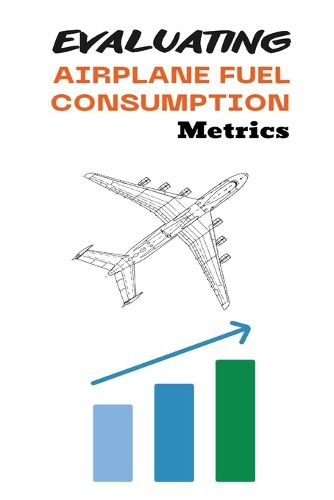Readings Newsletter
Become a Readings Member to make your shopping experience even easier.
Sign in or sign up for free!
You’re not far away from qualifying for FREE standard shipping within Australia
You’ve qualified for FREE standard shipping within Australia
The cart is loading…






This title is printed to order. This book may have been self-published. If so, we cannot guarantee the quality of the content. In the main most books will have gone through the editing process however some may not. We therefore suggest that you be aware of this before ordering this book. If in doubt check either the author or publisher’s details as we are unable to accept any returns unless they are faulty. Please contact us if you have any questions.
In the modern world, travel and commerce within the aviation industry are major drivers of global economic growth. Nonetheless, a number of barriers stand in the way of the aviation industry's continued expansion and viability. The largest of these issues is the fuel usage in aircraft. An increase in fuel consumption results in a rise in operating costs and anthropogenic emissions. In order to evaluate aviation fuel consumption criteria, the author's goal in this book is to evolve, conceptualize, and develop a reliable Reduction in Aviation Fuel Consumption (RAFC) model. A thorough assessment of the literature served as the foundation for the development and conceptualization of the RAFC framework. Therefore, this book examined a mix of qualitative and quantitative methods to implement the methodology with primary and secondary data. It carried out analysis utilizing a variety of techniques, including regression analysis, factor analysis, structural equation modeling, and AHP-entropy. This combination guaranteed the study's adaptability, economy, and consistency. Future interest in minimizing fuel consumption and emissions and maximizing revenue under prevailing social, economic, political, environmental, and other restrictions might be stoked by knowledge of RAFC correlations with factors and sub-factors. Consequently, it will lead aviation toward a future that is both ecologically friendly and fuel-efficient. This book is a vital resource for academics, researchers, engineers, airline personnel, and decision-makers (governments and regulatory organizations) as it offers a thorough framework that gives an overall view of the aviation industry with regard to fuel usage.
$9.00 standard shipping within Australia
FREE standard shipping within Australia for orders over $100.00
Express & International shipping calculated at checkout
This title is printed to order. This book may have been self-published. If so, we cannot guarantee the quality of the content. In the main most books will have gone through the editing process however some may not. We therefore suggest that you be aware of this before ordering this book. If in doubt check either the author or publisher’s details as we are unable to accept any returns unless they are faulty. Please contact us if you have any questions.
In the modern world, travel and commerce within the aviation industry are major drivers of global economic growth. Nonetheless, a number of barriers stand in the way of the aviation industry's continued expansion and viability. The largest of these issues is the fuel usage in aircraft. An increase in fuel consumption results in a rise in operating costs and anthropogenic emissions. In order to evaluate aviation fuel consumption criteria, the author's goal in this book is to evolve, conceptualize, and develop a reliable Reduction in Aviation Fuel Consumption (RAFC) model. A thorough assessment of the literature served as the foundation for the development and conceptualization of the RAFC framework. Therefore, this book examined a mix of qualitative and quantitative methods to implement the methodology with primary and secondary data. It carried out analysis utilizing a variety of techniques, including regression analysis, factor analysis, structural equation modeling, and AHP-entropy. This combination guaranteed the study's adaptability, economy, and consistency. Future interest in minimizing fuel consumption and emissions and maximizing revenue under prevailing social, economic, political, environmental, and other restrictions might be stoked by knowledge of RAFC correlations with factors and sub-factors. Consequently, it will lead aviation toward a future that is both ecologically friendly and fuel-efficient. This book is a vital resource for academics, researchers, engineers, airline personnel, and decision-makers (governments and regulatory organizations) as it offers a thorough framework that gives an overall view of the aviation industry with regard to fuel usage.